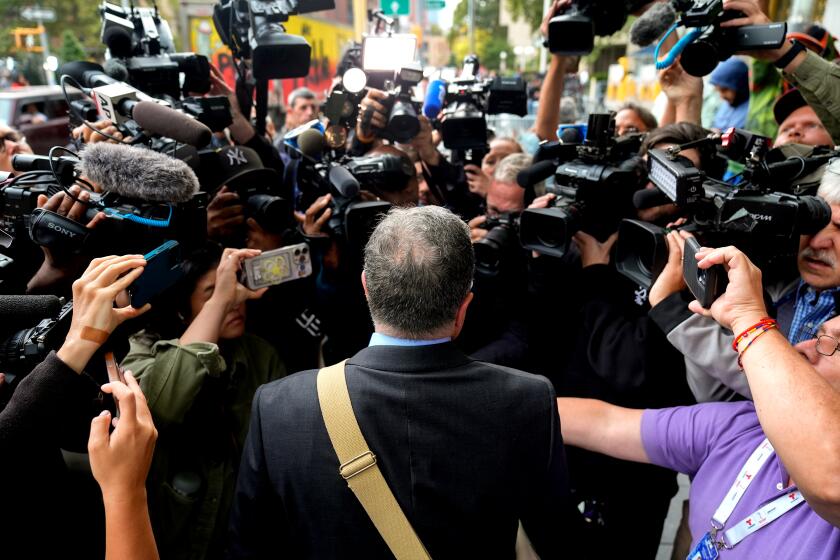Drones in L.A.: South Bay man flies aircraft to monitor police
A South Bay man who routinely records police activity has started using an unmanned drone to help with filming, just the latest example of how law enforcement is increasingly encountering the technology on the civilian side.
Torrance resident Daniel Saulmon, 42, has been flying his drone around the South Bay for about a month. He created a website on which he regularly posts videos shot at police DUI checkpoints and traffic stops that he says helps monitor possible abuses of power.
“My attorney told me there isn’t really much regulation on them,” said Saulmon, whose recordings are well known to South Bay officers. “I don’t think it’s a substitute for a hand-held camera, but it’s definitely a complement.”
Saulmon recently posted a video of himself flying his drone at Staples Center, where earlier this month a crowd of rowdy Kings fans celebrating the team’s Stanley Cup win took down a Phantom-model quadcopter. He has also flown his drone over South Bay oil refineries, outside of military bases and along the Hermosa Beach pier.
Saulmon said that while his videos show he’s not invading anyone’s privacy, it would take only an irresponsible pilot to bring negative attention to the technology.
“I have to use common sense with it,” Saulmon said. “It’s easy to fly. I would have to really go out of my way to be reckless and cause a problem with it.”
Police point to the incident outside of Staples Center earlier this month when the Kings won the Stanley Cup as an example of irresponsible piloting.
“It was kind of an eye-opener for us that this is something we really need to pay attention to,” said LAPD Cmdr. Andrew Smith about the drone outside the Kings game. “It’s certainly something that’s growing enormously.”
Drones are becoming an issue as the unmanned aircraft become more popular, especially as a way for hobbyists to create videos. YouTube is filled with drone videos taking in the views of Yosemite, prompting rangers last month to issue a public notice saying the machines are banned. At the Grand Canyon recently, a drone crashed, stunning visitors who were there to take in the sunset.
At Hermosa Beach last year, an irate mother confronted a lifeguard about a drone that hovered near her and her daughter, and snapped photos while they were tanning.
“Once drones become widely used in our society, there’s going to be a lot of concern,” said Jennifer Lynch, a senior attorney with the Electronic Frontier Foundation, a San Francisco-based digital legal advocacy group. “It’s because they’re so in-your-face. It’s easy to see the drone, it’s easy to recognize the privacy implications.”
The FAA estimated in a report that there could be 7,500 civilian hobbyist drones in use within five years. Federal officials said they hope to craft clearer civilian drone rules by 2015, but some experts said that’s too optimistic a timeline.
On Friday, the National Parks Service announced that it intended to ban low-flying drones on the 84 million acres of land it manages, citing concerns about visitor safety and the effect on wildlife.
Although the FAA has a host of regulations about how private businesses and law enforcement can use drones, there are few rules covering the casual hobbyist.
The FAA said recreational drone use is generally permitted as long as pilots don’t fly recklessly. Voluntary guidelines for model aircraft created in 1981 suggest flying at safe altitudes and distances away from airports, and avoiding crowds.
Police said there are some activities they consider illegal, including drones interfering with aviation activities. Using the planes to spy on neighbors would also raise red flags.
“I have to weigh it on a case-by-case basis,” said Lt. Phil Smith, assistant commanding officer for the LAPD’s air support division.
For breaking California news, follow @JosephSerna.
More to Read
Sign up for Essential California
The most important California stories and recommendations in your inbox every morning.
You may occasionally receive promotional content from the Los Angeles Times.











